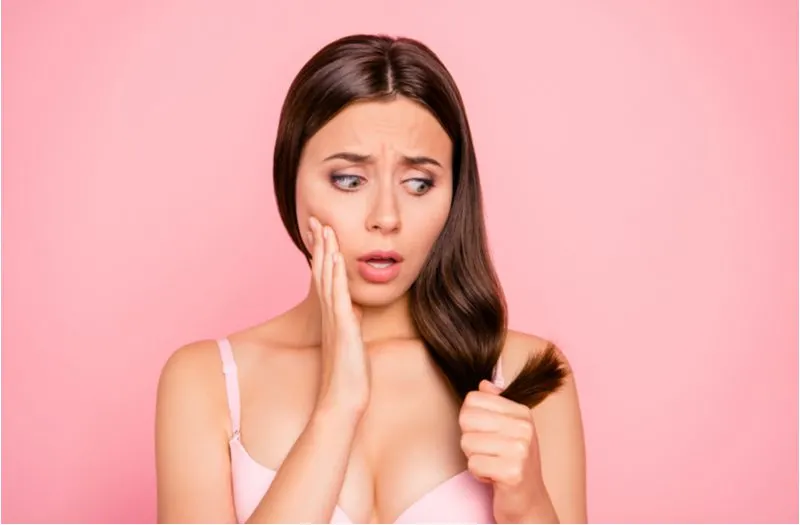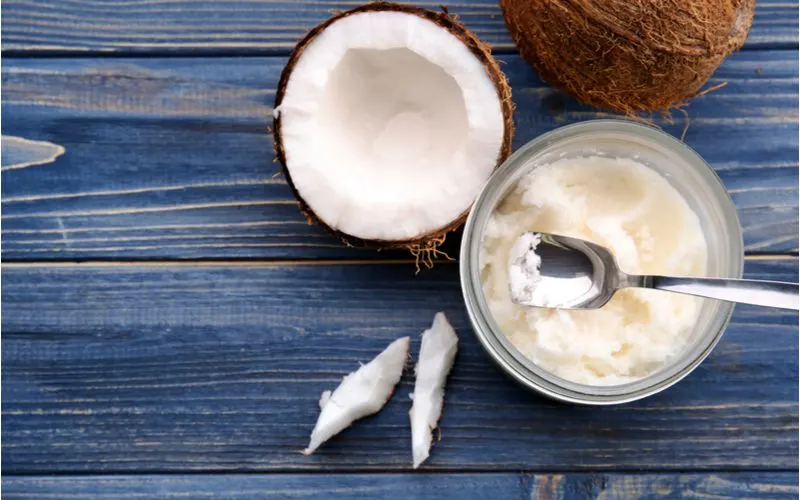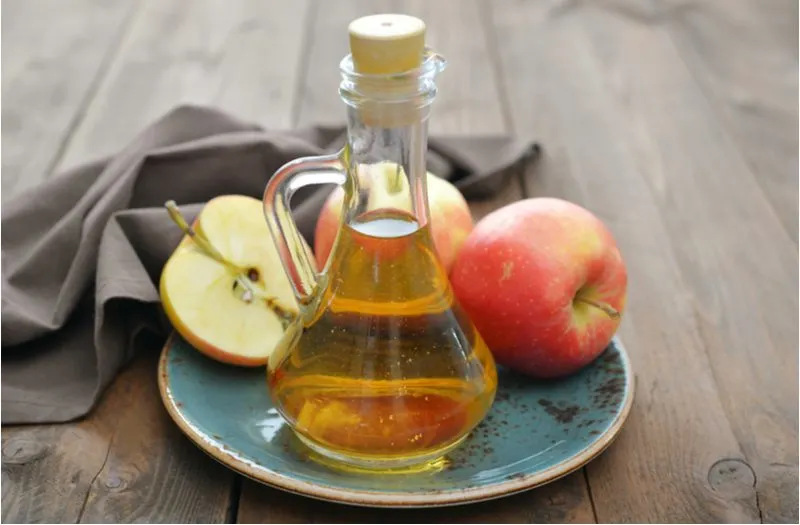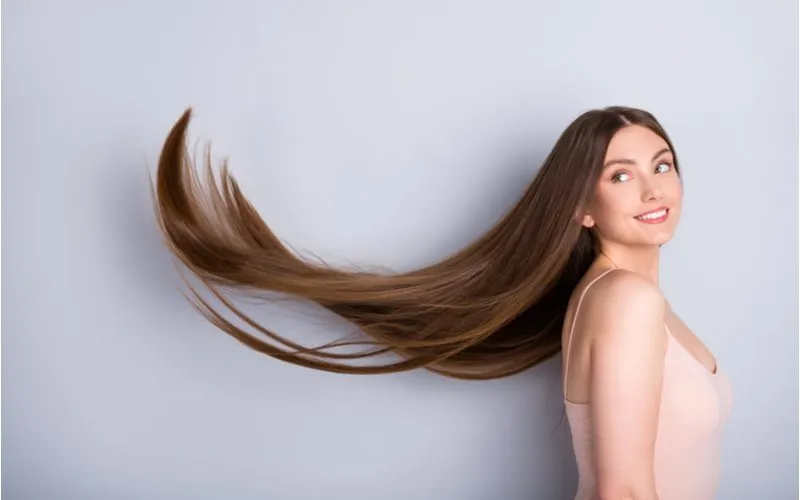Jump to:
Looking for a “does my hair need protein quiz?” Don’t worry — you’re in the right place. We’re hair experts, and do whatever we can to help you learn about hair care. And yes, that includes making quizzes.
Wondering If Your Hair Needs Protein? Start With Our Quiz.

Roman Samborskyi/Shutterstock
Try as we might, it seems like it’s almost impossible to get our hair into a perfectly healthy balance – strong, shiny, hydrated, and soft.
If you want touchably soft locks that are strong and resistant to breakage, you’ve got to get your moisture/protein balance juuuuust right. And that’s not easy to do. Your hair is made of mostly keratin, a type of protein that gives strands their strength, shape, and elasticity.
Having the right amount of keratin helps your hair retain moisture and keeps strands supple, soft, and hydrated. That’s why the beauty world is so focused on nailing the moisture/protein balance in hair.
If you’ve got the right amount of each, your hair will look and feel its best!
If you don’t have enough protein in your hair, you’ll know it because your hair will become a weakened, fragile shadow of its former self. Limp, mushy, gummy, stretchy, and prone to breakage and split ends, protein-deficient hair looks and feels damaged.
If you don’t have enough moisture in your hair, your hair may feel strong but extremely dry, rough, and prone to breakage at weak points near the ends.
And if you have plenty of moisture but too much protein, you’ll run into protein overload – and that comes with its own set of problems. But how do you know if your hair needs more protein or more moisture?
With our quick 5-question quiz, of course!
If you’re trying to get to know your mane better and have been wondering “Does my hair need protein?,” this quiz is for you.
By answering 5 short questions about your hair and how it looks and feels, we’ll get to the bottom of your moisture/protein balance issues and show you how to fix the problem. Find out if your hair needs protein, moisture, or both with our quiz.
See personalized tips and product recommendations for each result to get your strands back on track. Just answer 5 questions below to learn what your hair needs more – or less – of to look its best!
Does My Hair Need Protein? Quiz (5 Questions)
You Took the Quiz. Now What?
Now that you’ve got your quiz results, what can you do to fix the problem or stay on the right track? We’ve got you, girl. Keep reading to see how to handle protein-deficient, moisture-deficient, protein-overloaded, and balanced hair.
Hair Needs Protein? Here’s How to Add Protein.

New Africa/Shutterstock
Protein-deficient hair is weak, feels and looks damaged, and breaks off easily. It’s because there’s not enough protein “scaffolding” in your hair to properly strengthen and support it.
Adding protein to your hair will fill in microscopic gaps along the strands, smooth it out, and make it stronger. Look for products that contain hydrolyzed protein – it’s the only type of protein small enough to be absorbed by your hair.
Protein-enriched hair products will usually include one of the following words in the ingredients list:
- Hydrolyzed protein
- Keratin
- Silk
- Collagen
- Amino acids
- Peptides
Tons of products contain strengthening protein – even if it’s not advertised directly on the label. Most products labeled as strengthening or smoothing contain some type of protein.
Use more protein-enriched products to continually add protein to your hair and make it stronger. Try a damage-repairing hair mask with protein in the formula to add strength to your locks. Or make your own rice water at home for a quick, natural protein treatment!
You’ll also get a boost in moisture to help your hair retain hydration longer. For a serious protein boost that’ll leave your hair straight, sleek, and shiny, opt for a keratin straightening treatment.
This treatment fills in gaps in weak hair with protein for added strength and a smoother texture. Get ready for soft, touchable hair that is stronger, shinier, and more elastic!
Hair Needs Moisture? Here’s How to Hydrate.

Africa Studio/Shutterstock
Moisture-deficient hair has plenty of protein for strength, but not enough moisture for supple shine and hydration. Your hair feels rough, thirsty, and dry because very little moisture is making its way into your strands or you have high porosity hair.
Lack of moisture can stem from not using enough moisture-adding products like conditioner, masks, leave-ins, and oils. It can be a result of chemical, heat, or other type of damage.
It can be due to highly porous strands that lose moisture quickly. Whatever the cause, you need more moisture, STAT.
Try a deep conditioning hair mask. You can DIY or buy one to add much-needed moisture to your hair. Two of our favorite DIY moisture masks use ingredients you probably already have on hand!
- Banana Honey Mask: 1 ripe banana, mashed + 1 tablespoon honey. Mix and apply to wet hair, concentrating on roots and ends. Leave it for 10-20 minutes, then rinse thoroughly.
- Avocado Olive Oil Mask: 1/2 avocado, mashed + 1 egg + 1 tablespoon olive oil. Mix and apply to wet hair, concentrating on roots and ends. Leave for 10-20 minutes, then rinse thoroughly.
Use your hair mask after a warm shower for better moisture penetration. We recommend following up your DIY moisture mask with a leave-in conditioner spray to ensure plenty of hydration hangs around in your hair.
If you’re not already using moisturizing shampoo and conditioner, you need to start! Switch to a hydrating shampoo like this one from Maui Moisture. There’s a matching conditioner too so you can add moisture during every hair care step!
If you have medium to coarse hair, you can use oil to seal in the added moisture in your hair after doing a moisturizing treatment. Coconut oil is always great because it’s been proven to actually penetrate the hair.
Hair Has Too Much Protein? Here’s How to Fix It.

mama_mia/Shutterstock
Protein overload is an unpredictable beast. For some, it makes hair brittle (easily broken), stiff, and straw-like with split ends. For others, protein overload manifests as mushy, gummy hair that is dull, fragile, and limp.
It can be difficult to “diagnose” protein overload because it mimics other issues, but if you’re using a lot of protein-enriched hair products, it’s the most likely culprit.
You’ll know protein overload is the cause of your hair woes if your hair improves when you eliminate excess protein from your hair care routine. Start with a thorough clarifying shampoo or apple cider vinegar rinse to strip away some of the excess protein.
We recommend trimming away your split ends to get a “fresh start” and better see your progress. Next, raid your cabinet and take out any products that contain protein. This can be tricky because protein goes by many names on ingredient lists.
Avoid anything that says:
- Protein
- Keratin
- Hydrolyzed protein
- Amino acids
- Peptides
- Collagen
You don’t have to throw these products out, but avoid using them for the next few weeks to monitor your hair’s progress.
Switch to products that you know don’t contain protein and focus on adding moisture to restore your hair’s balance. Providing adequate moisture and zero protein for a while will let your hair heal from the protein overload.
You’ll notice softer, stronger, shinier hair with less breakage. Try a deep conditioning treatment once a week and see how much softer and stronger your hair starts to feel!
Balanced Hair? Here’s How to Stay on Track.

Roman Samborskyi/Shutterstock
Balanced hair isn’t really in need of a “fix” because it’s already on the right track. The main thing to concern yourself with is keeping your hair in that perfect moisture/protein balance with the right products and by avoiding common sources of damage.
Anti-frizz serum will tame even the fiercest frizz and flyaways, while tangles can be wrangled with a lightweight detangling spray or leave-in conditioner. Keep the greasies at bay with any of our recommended shampoos for oily hair.
If you’re using any protein-enriched products right now, you may want to limit your use to once a week or so. Make sure you clarify with clarifying shampoo in between uses to avoid protein overload. Stay on top of your hair’s moisture needs with regular deep conditioning treatments.
Avoid any type of chemical processing and excessive heat styling if you can. Your hair is in ideal health right now. You don’t want to mess it up!
If you’re desperate for a color refresh or some face-brightening highlights, make sure you follow up with a pH-restoring apple cider vinegar rinse and continue moisturizing deeply at least once a week.
Use heat protectant spray before using any type of hot tool to preserve the protein in your hair and avoid losing excess keratin.
